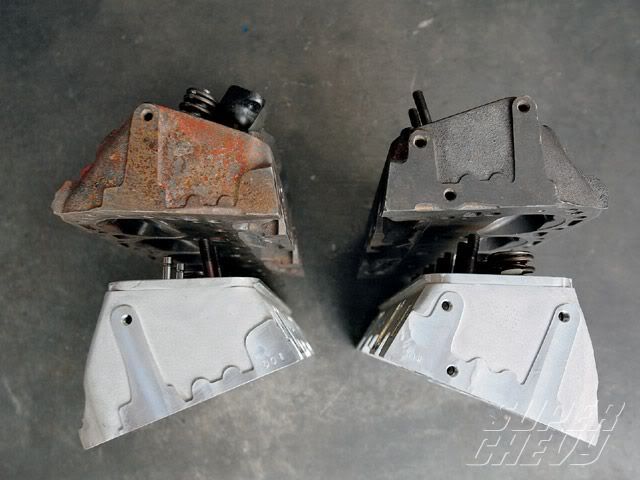The limiting factor in dry flow rate will be the carb itself which flows between 352 to 435cfm depending upon the venturi size (most likely it is the 423 cfm version). Just keep in mind that two barrels are rated at twice the intake vacuum drop that a four barrel is rated for so that a 500 cfm Holley actually flows the same as a 350 cfm four barrel. You can not directly compare them you have to multiply the two barrel rate by 0.70 to compare it to a four barrel.
I mention dry flow because we run gas as an aerosol suspended in the air column. This is where the old hand cast manifold that were made by hand rolling green sand on a desk top to form the runners has a lot of very sharp bends inside because that was the cheapest way to make the manifold. Today's wet flow manifolds that were designed by a computer that are now made by a computer controlled robotic arm cutting out foam (lost wax casting) has smoother transitions that maintain or even increase the port velocity inside the manifold. This allows a dual plane manifold to flow at the same rate as a single plane while retaining the advantages of the dual plane without having the fuel fall out of suspension.
Larger valves and head porting your original "Power Pack" heads will improve the horsepower potential, but the combustion chamber is the biggest improvement to head design that has resulted in every one with a SBC having the potential for a 500 horse engine. You can run a modern raised port aluminum head with a heart shaped fast burn combustion chamber and have the ends of the aluminum head machined to look like your old head. Once painted orange it could pass for the original.
Here is a set of AFR heads CNC'd to look like stock Chevy Fuelie heads:
The Power Pack head was introduced in 1956 as the first small block horsepower improvement. But even by 1968 they were long in the tooth and long since surpassed by the 1957 283 horsepower 283 fuel injected engine heads that have been steadily improved year after year up to 1969.
The Power Pack casting mark:
Compared to the Fuel Injected head:
What you could do is to grind off the identifying aftermarket brand name sand blast the grinding marks and then paint orange a cast aluminum modern aftermarket intake manifold (that doesn't have an air gap) with raised intake ports to match the heads. You could then have a stealth stock looking motor which is the first step in building a sleeper.
Big Dave







